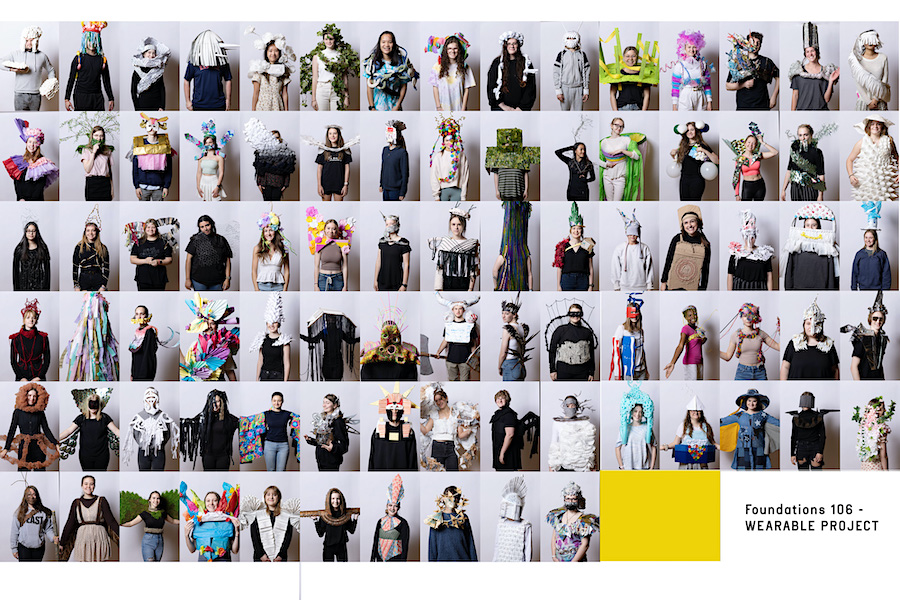Throughout history, people have expressed themselves by what they wear.
Art Foundations students in the South Carolina School of the Arts at Anderson University explored in depth wearable designs and what they communicate.
The Conceal and Reveal 3D Wearable Project challenged the students to create a wearable sculpture using one repeated material (either mass produced or natural) that they then transformed as much as possible to visually communicate something they either reveal or conceal from others emotionally, culturally or socially.
According to South Carolina School of the Arts Foundations Coordinator Bethany Pipkin, the project’s intent was to push students to create a successful three-dimensional work that activates space, and to address content/symbolism in their work.
Students met in small groups to critique their creations. They attempted to interpret the content of their classmates’ work before each artist revealed their intentions for their project to the group—what they either conceal or reveal to others.
“In introducing the project, we talked in lecture about how adornment across cultures is meant to communicate a message about the wearer and looked at both historical and contemporary examples. We also discussed the cultural values that determine some of the different ways people dress in western culture, from status symbols like the power suit, to branded attire, to what we generally wear (or don’t wear) to weddings and funerals and why. We also talked about marketing and stereotypes and critiqued our own culture a bit, identifying stereotypes and discussing ways in which they can be harmful,” Pipkin said. “After introduction to these ideas, students had strict parameters concerning their materials and their incorporation of the Elements of Art and Principles of Design into their sculpture, but much more freedom in communicating the content of their piece: what they conceal or reveal to others.
Pipkin noted that some students used the project to make visible an invisible disability such as anxiety, or addressed the ways in which they are seen as powerful, different, beautiful, or even invisible to others.
“Each student had a different story to tell, some concerning their outward appearance, and some addressing aspects of themselves that are not easily identifiable. Students were asked to use color, pattern, space, line, or mass to communicate these ideas symbolically, to create a mood or tone with the piece that other students could pick up on or start to interpret,” Pipkin said. “For example, a piece that looks like a giant mass sitting on a student’s head and shoulders communicates something very different than a flowing set of lines expanding out from their head or off of their back.
In many ways, the project was a complex one, with many different conceptual layers.”
The students presented their creations in a runway show across the stage in Daniel Recital Hall of the Rainey Fine Arts Center, ending with a photo shoot by Professor Jer Nelsen. Students were encouraged to cheer for one another as their classmates took to the “catwalk.”

